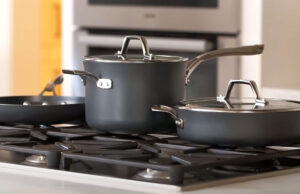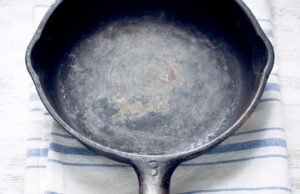As an Amazon Associate, I earn from qualifying purchases at no extra cost to you.
LG Dishwasher Not Cleaning Dishes? Fix It Fast With These Tricks
It’s so frustrating when your LG dishwasher leaves your dishes dirty. Many people expect a clean result every time, but sometimes even a modern machine can struggle. You don’t have to worry—here’s how to fix it quickly.
Ensure the filters are clean and properly placed. Also, make sure you are using the right detergent and the water temperature is high enough. Regular maintenance prevents buildup and ensures optimal cleaning.
Small changes, like proper loading and checking for hard water, can dramatically improve results. Understanding these basic steps saves time and keeps your dishwasher working efficiently.
How to Solve LG Dishwasher Not Cleaning Dishes Problems Easily
Check and Clean the Spray Arms
The spray arms are key to your dishwasher’s performance. Over time, food particles, grease, and hard water deposits can clog the tiny holes in the arms. When this happens, water cannot spray properly, leaving dishes dirty.
Start by removing the arms carefully. Wash them under running water and use a toothpick or small brush to clear each hole. Rinse them thoroughly and reattach. Make sure they spin freely without obstruction.
Also, check for cracks or wear. Even small damage can reduce pressure and affect cleaning. While cleaning, wipe surrounding areas to remove hidden dirt. This simple action can drastically improve your dishwasher’s performance.
Spray arm issues are often overlooked. Many people assume the dishwasher is broken, but cleaning the arms usually solves the problem. Once reassembled, run a short cycle without dishes to test the water flow. This ensures everything works properly.
Quick Points:
- Remove spray arms carefully
- Clean holes with toothpick/brush
- Rinse thoroughly
- Ensure arms spin freely
Clean and Maintain the Filter
A clogged filter reduces water flow and prevents proper cleaning. Most LG dishwashers have a removable filter at the bottom. Take it out and rinse under running water. Use a soft brush to remove stuck food or grease. Avoid harsh chemicals that can damage the filter.
Once clean, check the area around the filter for debris. Even small particles can affect performance. Reinstall the filter securely, making sure it fits snugly. Proper filter maintenance is essential for long-lasting performance and clean dishes every time.
Dirty filters also increase bad odors. Cleaning them regularly helps your dishwasher smell fresh and work efficiently. Set a monthly reminder to clean the filter, especially if you use the dishwasher often.
Quick Points:
- Remove and rinse filter
- Brush off stuck debris
- Avoid harsh chemicals
- Reinstall securely
Check Detergent Type and Amount
Using the wrong detergent or too much detergent can prevent proper cleaning. LG dishwashers work best with high-quality detergent pods or powder. Measure carefully according to the load size and water hardness. Too much soap can leave residue, while too little won’t clean dishes properly.
Also, make sure detergent is stored in a dry place. Moisture can reduce its effectiveness. Using rinse aid can improve drying and prevent spots. Always check the detergent compartment for blockages that might stop soap from dispensing.
Over time, detergent residue can build up in the compartment. Wipe it clean regularly. This small step ensures your dishwasher cleans thoroughly every time.
Quick Points:
- Use correct detergent type
- Measure properly
- Keep detergent dry
- Clean detergent compartment
Inspect Water Temperature
Water that is too cold cannot dissolve detergent or remove grease effectively. LG dishwashers usually require water at least 120°F (49°C). Check your water heater and run hot water at the sink before starting the dishwasher. This ensures the dishwasher starts with hot water.
Also, select a cycle that uses higher temperatures if dishes are heavily soiled. Some LG models have “Intensive” or “Sanitize” modes designed for tough stains. Make sure these settings match your cleaning needs.
Cold water not only reduces cleaning power but also leaves streaks and residue. Adjusting water temperature is an easy fix that dramatically improves results without extra effort.
Quick Points:
- Ensure water is at least 120°F
- Run hot water before starting
- Use intensive cycles for heavy loads
- Avoid cold water start
Load Dishes Correctly
Incorrect loading blocks water flow and prevents proper cleaning. Plates, bowls, and utensils should not overlap or block spray arms. Place larger items on the sides or back and smaller items in front. Make sure nothing obstructs the detergent dispenser.
Separate utensils to prevent nesting. Mixing large and small items randomly often leaves spots or food residue. Adjust racks for taller pots and pans to avoid blocking spray. Proper loading ensures water reaches every surface efficiently.
Also, avoid overloading the dishwasher. It may seem convenient, but this reduces cleaning effectiveness. Following the manufacturer’s layout instructions gives the best results.
Quick Points:
- Avoid overlapping dishes
- Place large items strategically
- Separate utensils
- Do not overload dishwasher
Run Regular Maintenance Cycles
Running maintenance cycles keeps the dishwasher clean and efficient. Use dishwasher cleaner or vinegar once a month to remove grease, scale, and odor. Wipe the door seals and edges with a damp cloth. Check for leaks or buildup in hidden areas.
Regular maintenance prevents small issues from turning into major problems. It keeps the machine running smoothly and ensures dishes come out sparkling clean. Consider checking the spray arms, filter, and detergent compartment during this routine.
Maintenance cycles are simple but highly effective. They extend the life of your dishwasher and improve daily performance. Skipping this step often leads to poor cleaning results over time.
Quick Points:
- Use dishwasher cleaner monthly
- Wipe door seals
- Check hidden areas
- Maintain filter and spray arms
| Problem Area | What to Do | Key Tip |
|---|---|---|
| Spray Arms | Remove, clean holes, rinse, reattach | Ensure free rotation |
| Filter | Rinse, brush, reinstall | Check for tight fit |
| Detergent | Use correct type and measure | Keep dry, clean compartment |
| Water Temp | Ensure 120°F, use hot start | Intensive cycles for tough loads |
| Loading | Avoid overlapping, separate utensils | Follow manufacturer layout |
| Maintenance | Monthly cleaner, wipe seals | Prevent buildup |
Common LG Dishwasher Issues You Should Know
Many LG dishwashers leave spots or residue because of hard water. Hard water creates mineral deposits that reduce cleaning power. Installing a water softener or using rinse aid helps prevent this. Clean spray arms and filters frequently to remove buildup. Proper care ensures dishes stay spotless every cycle.
Noise is another common issue. If your dishwasher is unusually loud, check for loose parts, misaligned racks, or debris caught in the spray arms. Tightening screws and cleaning moving parts often reduces noise significantly. Proper loading also reduces rattling.
Odors can develop over time. Food trapped in filters or spray arms creates a bad smell. Regular cleaning with vinegar or dishwasher cleaner helps maintain freshness. Leave the door slightly open after each cycle to let moisture escape.
Error codes may appear on the display, signaling water, drainage, or electrical issues. Consult the user manual or LG support for guidance. Many errors are minor and can be fixed with simple steps like checking connections or cleaning the drain.
Energy efficiency is important. Run full loads when possible and use eco-friendly cycles. Avoid pre-rinsing too much, as modern dishwashers handle light food residue well. Efficient use saves water, electricity, and ensures better cleaning.
Cleaning dishwasher walls and racks prevents grease and grime buildup. Use a soft cloth and mild cleaner. Avoid harsh abrasives that can scratch surfaces. Regularly inspect seals and hinges to prevent leaks and maintain proper function.
Door latch problems can prevent cycles from starting. Ensure the latch closes securely and nothing blocks it. Misaligned racks can also affect door closing. Small adjustments solve many functional issues without professional help.
Monitoring detergent quality matters. Cheap or old detergents may not dissolve properly. Use fresh, high-quality detergent and rinse aid to improve cleaning. Avoid overloading compartments and store detergents in a dry place.
LG Dishwasher Loading Mistakes to Avoid
One major mistake is stacking dishes too tightly. This blocks water flow and prevents detergent from reaching all surfaces. Plates should not overlap, and bowls should face downward. Ensure spray arms spin freely without hitting dishes.
Placing utensils in the wrong section is another issue. Mixing spoons, forks, and knives in one cluster causes nesting and poor cleaning. Use utensil holders and alternate placement for better results. Large pots and pans should be placed strategically to avoid blocking water jets.
Not separating delicate and heavily soiled items causes problems. Lightweight glasses may get spots from heavy pots nearby. Run appropriate cycles for delicate items, and place dirty pans separately. This ensures each item receives proper water pressure and detergent exposure.
Overloading racks is common. More dishes do not mean cleaner results. Crowded racks prevent proper water circulation. Follow the manufacturer’s load limit and distribute items evenly. Proper spacing ensures water reaches all surfaces and leaves dishes spotless.
Ignoring racks or foldable tines also affects cleaning. Adjust racks for taller items and remove or fold tines as needed. Some racks allow flexible placement for better water flow. Utilize these features for optimal performance.
Failing to check for blocking objects near the detergent compartment reduces soap efficiency. Make sure nothing prevents the detergent from dispensing fully. Clean compartment regularly to avoid residue buildup.
Always inspect spray arms and water jets after loading. Any obstruction decreases cleaning power. Small adjustments to load placement can make a huge difference. Careful organization results in sparkling dishes every cycle.
Best Practices for LG Dishwasher Detergent and Rinse Aid
Choosing the right detergent is crucial. High-quality pods or powders work best in LG dishwashers. Avoid generic or old detergents that may not dissolve completely. Measure detergent according to load size and water hardness. Proper dosing prevents residue and ensures clean dishes.
Rinse aid helps remove spots and speeds drying. Fill the rinse aid dispenser and adjust the level based on water quality. High mineral content may require more rinse aid. Regularly refill and check for clogs in the dispenser to maintain consistent performance.
Store detergent and rinse aid in a dry, cool place. Moisture reduces effectiveness. Avoid stacking detergent packets near water sources. Clean the dispenser occasionally to remove soap buildup and prevent blockage.
Do not mix detergent types. Combining powder, gel, or pods can create residue or poor cleaning. Stick to one type and use as recommended. Using the dishwasher’s “Intensive” or “Sanitize” mode ensures maximum cleaning with proper detergent.
Test water temperature to complement detergent effectiveness. Hot water dissolves detergent better and removes grease. Preheating water slightly by running hot water at the sink before starting improves cleaning. These small actions make a big difference.
Monitor dishwasher performance regularly. Residue, spots, or leftover food may indicate detergent or rinse aid issues. Adjust type, amount, or dispenser settings as needed. Routine care ensures consistent results over time.
How to Fix LG Dishwasher Drain and Water Issues
Poor drainage causes dirty dishes. Check the drain hose for clogs or kinks. Remove debris and make sure the hose is properly positioned. Standing water can reduce cleaning efficiency and lead to odor.
Inspect the dishwasher’s filter and pump. Small particles can block water flow. Clean the filter regularly and ensure the pump runs smoothly. Proper drainage allows new clean water to circulate, improving performance.
Hard water creates mineral buildup in pipes and spray arms. Consider installing a water softener. Descaling the dishwasher periodically prevents blockage and keeps dishes spotless. Vinegar cycles can help dissolve mineral deposits naturally.
Check the water inlet valve for restrictions. Sediment can reduce water pressure, preventing proper cleaning. Ensure the valve is clean and functioning. Low water pressure also affects detergent dissolving and cycle efficiency.
Rinse cycles can fail if sensors are dirty. Wipe down sensor areas and check for obstructions. Clean sensors improve water detection and ensure the dishwasher completes cycles fully.
Leak issues may appear around seals. Inspect door gaskets and seals for wear. Replace damaged parts to prevent water loss and maintain proper pressure. Regular checks prevent costly repairs and maintain optimal cleaning.
Test all solutions by running an empty cycle. Observe drainage, spray, and water flow. Adjust any issues identified and repeat the process until the dishwasher functions correctly.
Frequently Asked Questions (FAQs)
Is it normal for LG dishwasher to leave spots?
Yes, it is normal sometimes, especially with hard water. Spots occur when minerals in water leave residue after drying. Using rinse aid and proper detergent helps prevent this. Cleaning filters and spray arms regularly also reduces spots. Running the dishwasher at higher temperatures ensures better cleaning.
Can a clogged filter cause dishes to be dirty?
Absolutely. A clogged filter reduces water flow and prevents detergent from reaching dishes. Food particles, grease, and debris often block the filter. Cleaning the filter regularly ensures proper circulation and improves washing performance. Never run the dishwasher without a clean filter.
Do I need special detergent for LG dishwashers?
Yes, using high-quality detergent is recommended. Pods or powders designed for dishwashers work best. Avoid generic or old detergent that may not dissolve fully. Measuring detergent properly ensures dishes are cleaned thoroughly without residue or spots.
Is it important to load dishes correctly?
Yes, loading dishes correctly affects water flow. Overlapping items or blocked spray arms prevent proper cleaning. Plates, bowls, and utensils should be spaced evenly. Heavy and light items should be separated. Following proper loading instructions improves dishwasher efficiency.
Can water temperature affect cleaning performance?
Definitely. Cold water cannot dissolve detergent well or remove grease. LG dishwashers need at least 120°F water. Preheating water or running hot water before starting improves cleaning. Using intensive or sanitize cycles with hot water ensures spotless results.
Do I need to run maintenance cycles?
Yes, maintenance cycles keep your dishwasher clean and working efficiently. Using vinegar or dishwasher cleaner removes buildup, grease, and odors. Wiping door seals and checking spray arms helps prevent future problems. Monthly maintenance ensures long-lasting performance.
Is hard water the reason for residue?
Often, yes. Hard water contains minerals that leave white residue on dishes. Installing a water softener or using extra rinse aid reduces this issue. Regular cleaning of spray arms and filters also helps prevent buildup.
Can blocked spray arms affect cleaning?
Yes, blocked spray arms prevent water from reaching dishes. Food particles or mineral deposits can clog holes. Removing, cleaning, and checking spray arms improves water flow. Make sure they spin freely after cleaning for optimal performance.
Final Thoughts
LG dishwashers are reliable, but they need care to perform well. Regular cleaning, proper loading, and using the right detergent make a huge difference. Small maintenance routines prevent frustration and save money. With attention to spray arms, filters, water, and cycles, your dishwasher can deliver sparkling, spotless dishes every time. Investing a little effort ensures consistent results and a happier kitchen.




